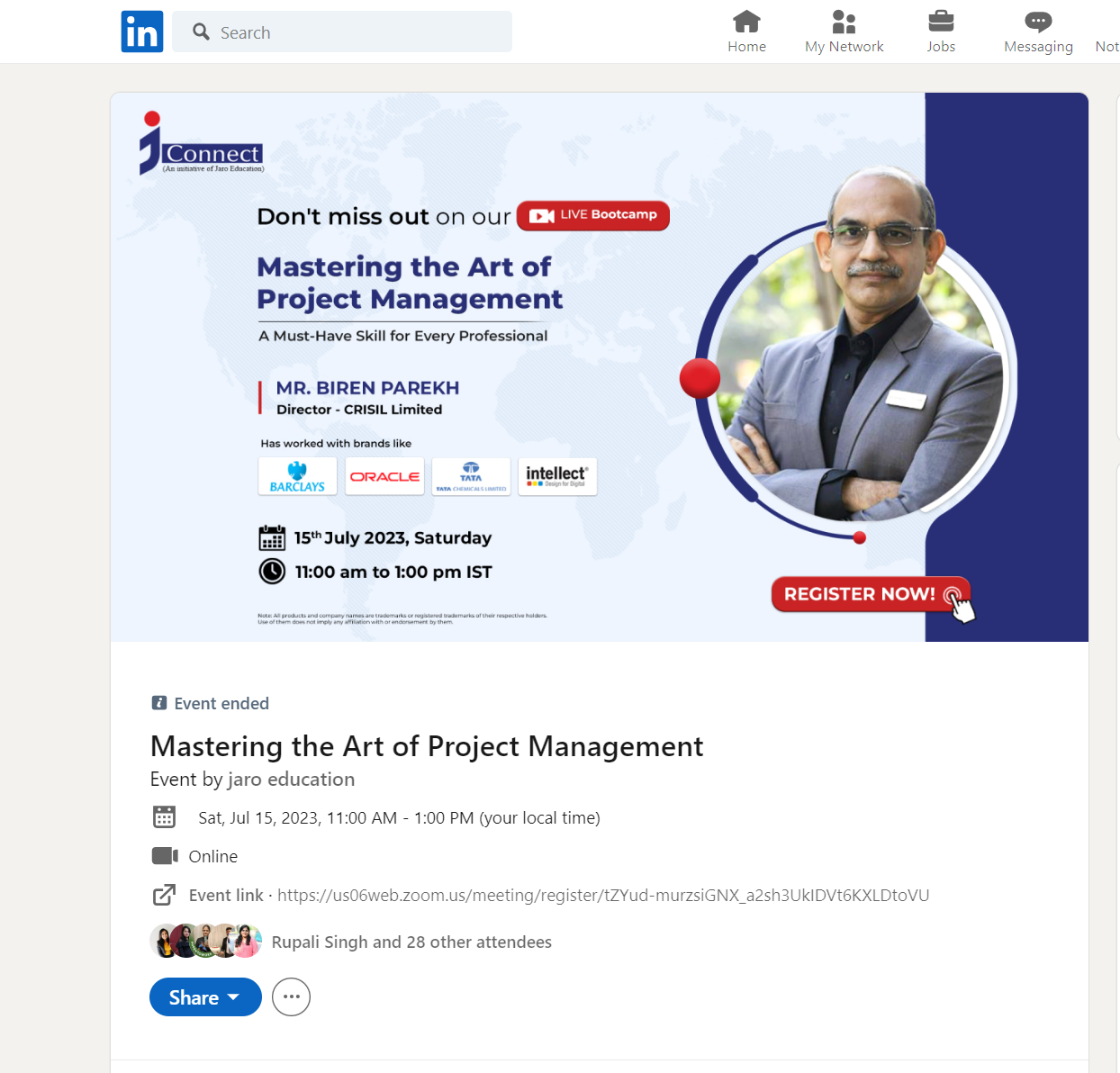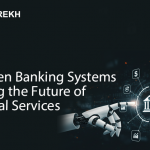Leadership & Thought Leadership
Leadership and thought leadership are two distinct concepts that often get conflated. While both are important, they serve different purposes and have different strengths. Which one is more valuable in today’s business world, particularly when you are hiring.
Leadership refers to the ability to guide, inspire, and motivate a group of people towards a common goal. Leaders set the vision, direction, and strategy for their organization, as well as making decisions and taking actions that move them towards their goals. They also need to be good at communicating, delegating, and empowering their team members, so that everyone can work together effectively.
On the other hand, thought leadership is a strategy that focuses on establishing an individual or organization as an expert in a particular field. This is achieved by creating and sharing insightful, authentic, and valuable content that showcases their knowledge, expertise, and perspective on a topic. Thought leaders aim to influence and shape the way people think, feel, and act by offering unique insights, perspectives, and solutions to problems.
While leadership and thought leadership share some common traits, such as vision, communication, and influence, they are not interchangeable concepts. Leadership is about leading people towards a common goal, while thought leadership is about shaping ideas, perspectives, and beliefs. Leaders need to be effective communicators and motivators, while thought leaders need to be insightful, innovative, and influential.
So, which one is more valuable in today’s business world, particularly when you are hiring at a leadership position?
While leadership is critical for achieving organizational goals and driving performance, thought leadership is becoming increasingly important in a world where ideas and innovation are key drivers of success.
Here are some reasons:
- Thought leadership builds credibility and trust:
In today’s digital age, consumers are bombarded with information and options, making it harder for them to make informed decisions. Thought leaders who can offer valuable insights, ideas, and solutions to problems can help cut through the noise and establish trust with their audience. By consistently sharing their knowledge and expertise, thought leaders can build credibility and authority in their field, which can lead to more opportunities for collaboration, influence, and growth.
- Thought leadership creates differentiation:
In a crowded market, businesses need to find ways to stand out and differentiate themselves from their competitors. Thought leadership is an effective way to do this by showcasing a unique perspective, approach, or solution to a problem. By offering something that no one else is, businesses can establish a competitive advantage and attract customers who are looking for new and innovative ideas.
- Thought leadership drives innovation:
Innovation is key to staying competitive in today’s fast-paced business world. Thought leaders who are constantly pushing the boundaries of their field, challenging assumptions, and exploring new ideas can inspire others to do the same. By promoting a culture of innovation, thought leaders can help their organization stay ahead of the curve and adapt to changing market conditions.
In a nutshell, I feel that both leadership and thought leadership are essential in today’s business world while hiring. While leadership is critical for achieving organizational goals and driving performance, thought leadership is becoming increasingly important for establishing credibility, differentiation, and innovation. The most successful businesses and individuals are those who can balance both and leverage their unique strengths to achieve their goals.
Lessons from Mega failures – Successes, Failures and Turnarounds
Project Management: Mastering the Art of Mega Programs
Project management is the secret sauce to turning ideas into success no matter the size or scale of your project. It helps achieve goals, useful resources wisely and keep stakeholders happy. But when it comes to Mega Programs, things get much more complicated. These are huge, long-term initiatives with many moving parts and even small mistakes can lead to big problems.
In this article, we’ll explore what Mega Programs are, why they are so challenging, and how to manage them successfully. We’ll also share insights from a discussion with Kailash Upadhyay, A keynote speaker in project management, to understand how governance and risk management can make or break these massive projects.
What Are Mega Programs?
Mega Programs are not just big projects, they are complex systems with many interconnected projects, lots of stakeholders, and long timelines. These Strategic leadership programs can take years or even decades to complete. Examples include:
- Building highways, airports, or smart cities.
- Transforming an entire company’s digital systems.
- Global efforts to improve sustainability.
Because of their size and complexity, Mega Programs need careful planning, strong governance, and good risk management. Without these, they can easily go over budget, miss deadlines or fail completely.
The Pillars of Successful Mega Programs
To manage Mega Programs efficiently, focus on three key areas:
- Governance
Governance is the bedrock that keeps everyone accountable and aligned with the program’s goals. In Mega Programs, weak governance can lead to confusion, conflicts and poor decisions. Strategic leadership and leadership excellence are critical here, as they provide the vision and direction needed to navigate complexity. Strong governance ensures everyone works together, and the program stays on track.
- Risk Management
Risk management is about anticipating and dealing with potential problems before they happen. In Mega Programs, risks are bigger because the projects are so large and take so long. If risks aren’t managed well, they can cause major failures. However, with proactive strategic thinking for leaders, risks can be controlled and even turned into opportunities. - Stakeholder Management
Mega Programs involve several stakeholders, like executives, investors, end-users, and regulators. Each group has its own needs and expectations. This is where leadership and team-building skills come into play, fostering collaboration and alignment across diverse groups.
Let’s take a closer look at a more advanced topic: Mega Programs. These are not just big projects, they are massive, complex initiatives that involve many smaller projects, countless stakeholders, and long-term commitments.
Diving Deeper: My Sixth Podcast on Project Management
Recently, I had the opportunity to record my sixth project management podcast as a guest, where I discussed this fascinating topic with Kailash Upadhyay. Kailash is a highly certified agile leader in project management (PMI: PfMP, PgMP, PMP, ACP, RMP | Microsoft: MCP, MCT | IIBA: CBAP). Together, we explored how governance and risk management can make or break Mega Programs.
What Are Mega Programs?
Mega Programs are large-scale initiatives that often span years and involve multiple projects. Examples include building a smart city, launching a space mission, or implementing a nationwide healthcare system. These programs are complex because they involve many moving parts, numerous stakeholders, and high stakes.
Key Insights from the Podcast:
- Governance is Critical: Mega Programs need strong governance to ensure decisions are made effectively and everyone is accountable. Without it, things can quickly fall apart.
- Risk Management is Essential: In Mega Programs, risks are higher and more complex. Identifying and managing these risks early is crucial to avoid costly mistakes.
- Real-World Examples: We discussed real-world case studies to show where things can go wrong and how to prevent these issues.
Why This Matters:
Mega Programs are challenging, but they also offer huge opportunities. By understanding the importance of governance, risk management, the art of project management and strategic leadership programs, we can increase the chances of success.
Turning Insights into Action
The lessons from Mega Programs apply to all types of projects, big or small. Whether you’re an Agile project manager, a certified Agile leader, or a Project leader, the principles of good project management remain the same.
Catch the Full Episode: If you’re interested in learning more, I invite you to listen to the full podcast episode. Kailash and I dive deeper into the world of Mega Programs, sharing practical insights and tips you can use in your own projects. Listen to the Podcast Here
Final Thoughts
Project management is a skill that can be applied to almost any field. Whether you’re a beginner or an experienced professional, understanding the basics and learning from real-world examples can help you succeed.
Mega Programs are a great example of how project management can be used to tackle complex challenges. By focusing on governance, risk management and teamwork, we can turn ambitious ideas into reality.
What are your thoughts on project management and Mega Programs? Have you worked on a large project before? Share your experiences in the comments below. I’d love to hear from you!
Life Hacking Skills
I found this – Life Hacking skills or Body Language – quite pertinent and useful for professionals.
These are skills we can take wherever we go in Life, no matter what we do.
One can adopt these languages to develop deep and meaningful connections when meeting someone..

LinkedIn Workshop
Friends,
I get a good number of messages on having good profile and sharing engaging content. My LinkedIn connections have soared from 5000 a year ago to 15000+. So, I have organized a paid webinar in coordination with graphy to share secrets on how to create an impressive personal profile (5-star) and develop a personal brand on LinkedIn.
Do register at URL given below to learn nuances of creating a master profile and develop personal brand.
First few registrations will get Amazon gift voucher. Register fast.
Register at https://birenparekh.graphy.com/sessions/a385f3a6-78a7-4cb4-b9b2-6c93ecdda1d6
Manage your time
Stephen Covey’s famous 4 Quadrants.🟦. This reminded me of concentrating your efforts on 💎 MVP (Most Valuable & Profitable) activities.
The time should be spent in each quadrant as per this:
📌 Q I when there is crisis, pressing problems, deadlines, ad hoc meetings, Firefighting
📌 Q II is normally for vision, planning, discipline, Empowerment
📌 Q III is primarily because of interruptions, mails, Short-term focus
📌 Q IV refers to trivial work, social media, binge watching, “Escape activities”
As per this quadrant, excellent organisation should ensure that their human resources spend
– 20-25% of their time in Q I (Quadrant of Crisis)
– 65-80% of their time in Q II (Quadrant of Quality)
– 15% of their time in Q III (Quadrant of Deception)
– 1% of their time in Q IV (Quadrant of Waste)
However, many organisations’ swaps time of Q I & Q II and they feel that this is the Normal way. That means such organisations feel that if less time is spent in Q I, employees are not productive and they do NOT reward those who work with meticulous planning (Q II).
Q I is also one of the key reasons for high attrition… Agree or not??
So, identify you most ✨MVP ✨ activities and spend more and more time in Q II which means you will spend less time in Q I.
Where do you spend most of your time – Q I, Q II, QII or Q IV??
Mastering the Art of Project management
🤩 It was awesome to learn that 510 professionals/learners 🧑🏼🤝🧑🧑🤝🧑🧑🏼🤝🧑 tuned in from across the globe for my session on “Introduction to Project Management” last Saturday morning.
Initially, I thought that 2 hours will become boring for participants. But almost the full audience was present throughout the duration and still there was no end to queries.

Not only that, we received excellent feedback from 171 participants, with 99% quoting it as an excellent session. And asked for more. The feedback snapshot is in the comments.
Can’t ask more!!!! Thanks, Ayush Malaviya, for the opportunity.
Get in touch with me for any advice in case if you want to upskill your project management skills.
 My published book ‘Supercharge your project Management Skills’ also gives a good idea to aspiring and novice PMs, startup founders, and seasoned managers on how to handle some practical but tricky situations not documented anywhere else. Again, the link to purchase on Amazon India, US, and UK is available in the comments. The book has also received excellent feedback on Amazon.
My published book ‘Supercharge your project Management Skills’ also gives a good idea to aspiring and novice PMs, startup founders, and seasoned managers on how to handle some practical but tricky situations not documented anywhere else. Again, the link to purchase on Amazon India, US, and UK is available in the comments. The book has also received excellent feedback on Amazon.
#projectmanagement #webinar #session #author #projectmanager #pmi #projectmanagementinstitute #leaders #pm #speaker #projectleader #project #community #amazon #students #bookauthor #bookreview #bestseller #book #lessons #lessonslearnt #projectmanagers #career #help #project #leaders #learning #experience #lifeskills #usa #uk #europe #strategy #lessons #startup #startupfounders
My Book Launch
✨22nd Oct 2022✨ is a very special day for me.
I am elated to announce 📢 the launch of my book – Supercharge your Project Management skills – on the global platform.
🎯I wrote this book because I believe everyone has a story to tell, and I wanted to share mine with the world. New, aspiring, and even seasoned project managers often look for guidance in difficult situations. This book culminates learning’s drawn from over a decade of my personal experience in this field, and I hope it helps my readers in their project management journey.
A big thanks 🙏to my family, who have supported me throughout this process. I wouldn’t be here without them.
The book is available on Amazon and Kindle.
👉 Kindle at https://lnkd.in/dn_aSsa9
👉 Amazon at https://lnkd.in/dgpdciCE
Soon, it will be available on international book platforms.
Looking forward to hearing your feedback.
#project #management #india #leadership #digitalmarketing #professional #happytohelp #opportunity #share #thankyou #content #projectmanagement #leader #projectmanagers #lessons #experience #amazon #learning
My Book Website
✨I am happy to share that I have launched a website for my book – Supercharge your project management skills. The website link is the same as my book name, i.e. www.superchargeyourprojectmanagementskills.com.
I will continue to post blogs on the link and new learnings over there. It also has a link to purchase my books on Amazon India, US, UK & Kindle.
Thank you for your support. The book has received over 2 dozen reviews averaging 4.9 ⭐.
#author #book #projectmanager #community #projectmanagement #amazon #students #bookauthor #bookreview #bestseller #book #lessons #lessonslearnt #projectmanagers #career #help #project #leaders #learning #experience #lifeskills #usa #uk #europe #strategy #lessons #startup #startupfounders #india #blogs
NeoBank
With the COVID-19 pandemic, customers are wary of visiting branches. This has really given a booster to digital banking.
Neo banks, also known as Challenger banks or smart banks, are digital banks with no brick-and-mortar physical branches. The Fintech, which does not use legacy banking systems or pre-existing infrastructure, can be qualified as a bona fide Neo bank.

Since a decade, Neo banks are popular in Europe, Japan, the US, and Australia. They have started their operations in India for a few years. It will take some time before they become disruptive and transform the banking landscape. As of now, Neo banks, partner with existing banks because they do not have a banking license.
With no backlogs of legacy systems and out-dated business processes, Neo banks are considered highly flexible and adaptive to new technologies. Thanks to zero overheads of physical branches and manpower in those branches, they have an overall lower cost structure and are able to offer attractive interest rates for deposits and loans both.
Cloud-based Neo banks offer –
- Omnichannel and Immersive customer experience
- Contextual offerings
- 24×7 Customer support using chatbots, AI and ML
- Scalable infrastructure
- Highly automated services like auto reconciliation, regulatory compliance-ready reporting.
- Cash flow forecasting with AL and ML-based predictive alerts
- Meaningful spending insights using AI
- Open banking compliant API
- Automated and digital workflow thereby reducing processing time to a few seconds/minutes
- ML based risk Analyser
- Innovative features like goals-based savings
Normally, Neo banks operate in targeted and un-served segments like
- Tech-savvy millennial
- SME and mass at the bottom of the pyramid who are ready to adapt to new technology to earn little more interest
- Niche banking service like payments, budget, receivables and spend management
- Provide Forex cards, credit cards, personal loans
Some notable Indian players are Open, NiYo, Yono, Kotak 811, PayZello, Instantpay, Yelo, India Post Payment Bank, EzoBank, and Zeta.
These Neo banks are here to stay and grow by leaps and bounds in the coming days. And they are going to disrupt conventional banking as Airbnb, Ola/Uber had disrupted the traditional models.
Net Neutrality
The term, Net Neutrality, was originally used by Tim Wu (Columbia university professor) in 2003. It is the principle that telecom companies, Internet service providers & government should not differentiate on data access on the internet. Internet was configured to only provide a connection between two devices without favoring any particular technology, industry or service provider. This is the essence of neutrality of the internet. For example, a service provider should not provide greater access speed to a website on the basis of higher payment from that website. Read More…













